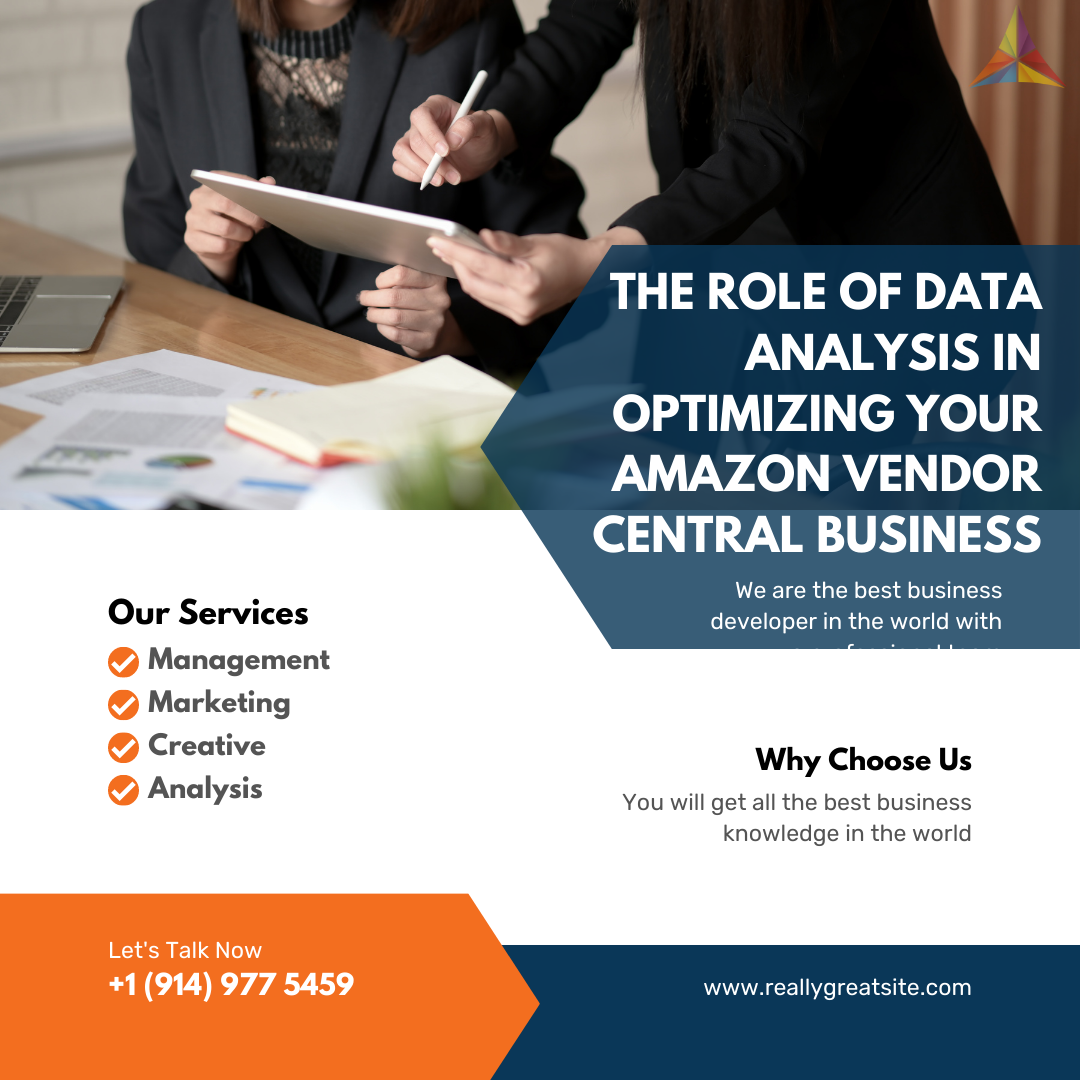Data analysis plays a crucial role in optimizing your Amazon Vendor Central business. By leveraging the power of data, you can gain valuable insights into customer behavior, sales trends, and product performance.
Share This Story, Choose Your Platform!
In this comprehensive guide, we will explore the importance of data analysis, key metrics to track, and strategies for effectively using data to make informed business decisions.
The Importance of Data Analysis on Amazon Vendor Central
Data analysis is essential for driving success on Amazon Vendor Central. Here are some reasons why it is crucial to incorporate data analysis into your business strategy:
Understanding Customer Behavior:
Data analysis helps you gain insights into customer preferences, buying patterns, and demographics. By understanding your target audience, you can tailor your product offerings and marketing strategies to meet their needs effectively.
Optimizing Sales Performance:
Analyzing sales data allows you to identify trends, peak selling periods, and high-demand products. By leveraging this information, you can optimize inventory levels, plan promotions, and enhance sales performance.
Identifying Growth Opportunities:
Data analysis reveals untapped market segments, emerging trends, and product opportunities. By identifying these growth areas, you can expand your product offerings and stay ahead of the competition.
Monitoring Competitor Performance:
By analyzing competitor data, you can gain insights into their pricing strategies, product launches, and customer reviews. This information helps you stay competitive and adapt your own business strategies accordingly.
Key Metrics for Data Analysis on Amazon Vendor Central
To effectively analyze your data on Amazon Vendor Central, it is important to track key metrics. Here are some essential metrics to consider:
Sales Performance Metrics:
Monitor metrics such as total sales, units sold, and average order value. Analyze these metrics across different time periods, product categories, and customer segments to identify patterns and opportunities for growth.
Conversion Rate:
Track the conversion rate, which is the percentage of visitors who make a purchase. Analyze conversion rates at various stages of the customer journey, such as product page views, add-to-cart, and checkout. Identify factors that impact conversion and optimize accordingly.
Customer Feedback and Reviews:
Monitor customer feedback and reviews to gain insights into product satisfaction, identify areas for improvement, and address customer concerns promptly. Positive reviews can boost sales, while negative reviews indicate areas that need attention.
Advertising Performance:
Analyze the performance of your advertising campaigns, including click-through rates, conversion rates, and return on ad spend (ROAS). Optimize your advertising strategy based on data insights to maximize ROI.
Strategies for Effective Data Analysis on Amazon Vendor Central
To optimize your Amazon Vendor Central business through data analysis, consider the following strategies:
Data Collection and Organization:
Ensure that you have a robust system in place to collect, organize, and store data effectively. Leverage tools and software solutions that automate data collection processes and provide intuitive dashboards for analysis.
Utilize Amazon Vendor Central Analytics:
Take advantage of the analytics tools provided by Amazon Vendor Central. Explore the various reports and dashboards available, such as the Business Reports, Advertising Reports, and Inventory Reports. These tools offer valuable insights into your business performance.
Implement A/B Testing:
Conduct A/B tests to compare the performance of different strategies, such as pricing, product descriptions, and promotional offers. Analyze the data from these tests to identify the most effective approaches for your products and target audience.
Invest in Data Visualization:
Use data visualization techniques, such as charts, graphs, and heatmaps, to present data in a visually appealing and easily understandable format. Visual representations of data can help identify trends, patterns, and anomalies more effectively.
Continuously Monitor and Adapt:
Data analysis is an ongoing process. Continuously monitor your data and adapt your strategies based on the insights you gain. Stay updated with market trends, customer preferences, and changes in the competitive landscape to make informed decisions.
Utilize Predictive Analytics:
Leverage predictive analytics to forecast future sales, identify demand patterns, and optimize inventory management. By using advanced algorithms and statistical models, you can make data-driven predictions and plan your business activities accordingly.
Segmentation and Personalization:
Use data analysis to segment your customer base and personalize your marketing efforts. By understanding different customer segments, you can tailor your messaging, offers, and recommendations to create a more personalized shopping experience.
Monitor Supply Chain Performance:
Analyze data related to your supply chain, including order fulfillment, shipping times, and supplier performance. Identifying bottlenecks and inefficiencies can help you streamline your operations and ensure smooth order processing.
Collaborate with Suppliers:
Share relevant data with your suppliers to improve collaboration and optimize inventory management. By providing suppliers with accurate sales forecasts and inventory data, you can work together to meet customer demand efficiently.
Embrace Artificial Intelligence:
Explore the possibilities of AI-powered data analysis tools and algorithms. Machine learning algorithms can uncover hidden patterns and insights in large datasets, providing you with valuable information to drive your decision-making process.
Data Security and Privacy:
Ensure that you prioritize data security and privacy. Implement robust data protection measures and comply with applicable regulations to safeguard customer information and maintain trust.
Conclusion
Data analysis is a powerful tool for optimizing your Amazon Vendor Central business. By harnessing the insights derived from data, you can make informed decisions, enhance sales performance, and stay ahead of the competition. Implementing effective data analysis strategies, tracking key metrics, and leveraging advanced analytics tools will enable you to unlock the full potential of your Amazon Vendor Central account. Embrace data-driven decision-making and watch your business thrive in the dynamic and competitive marketplace.
Unlock the full potential of your Amazon Vendor Central business with Purple Cow’s Amazon Vendor Central Management Services. Gain valuable insights, optimize sales performance, and stay ahead of the competition. Our advanced analytics tools and strategies will help you make informed decisions, personalize your marketing efforts, and streamline your operations. Harness the power of data to drive success and maximize profitability. Choose Purple Cow for data-driven success on Amazon Vendor Central.
Share This Story, Choose Your Platform!
In This Blog:

















